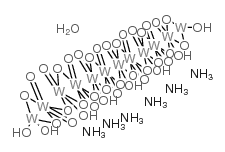| Structure | Name/CAS No. | Articles |
|---|---|---|
 |
vanadyl sulfate hydrate
CAS:123334-20-3 |
|
 |
Ammonium metatungstate hydrate
CAS:12333-11-8 |